We’ve looked into mass weapons, now let’s take a peek at lasers.
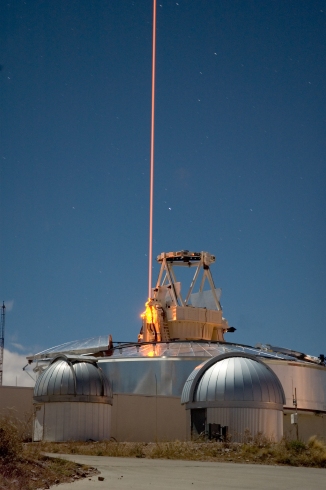
Comparatively, lasers are far more complex than any of the weapon designs we’ve looked into, with far more components and considerations.
For example, in module design, railguns and the like can be optimized by simple tweaking and trial and error. On the other hand, it is very difficult to do so when designing lasers. The relations between the inputs and outputs are not only nonlinear, they are absolutely not monotonic, so simply using trial and error to find ideal cases is not always possible.
While there was an explosion of different design options and choices for railguns as we saw in Origin Stories, with lasers, it was far worse. First you’ll choose your laser type from amongst a staggering array of types. Then you’ll need a pumping source, which includes a nearly infinite number of pumping and lasing geometries, each with different advantages. And you’ll probably want to add a nonlinear crystal to harness Frequency Switching in order to double, triple, or quadruple your photon frequency.

Then you need to worry about the optics between each and every subsystem, ensuring the photons don’t seriously damage each lens, mirror, or nonlinear crystal at each point. Plus, you need to arbitrarily focus your beam at different distances, either with a Zoom Lens or with a Deformable Mirror (though in practice, zoom lens tend to be impractical for extremely long ranges, meaning you’re usually stuck with using a deformable mirror).
Also, and if you want to pulse your laser, you’ll need to use Mode Locking, Q Switching, or Gain Switching to do so. Finally, while mechanical stress are basically irrelevant for lasers (recoil of lasers is minuscule), thermal stresses are huge. Cooling your laser effectively is one of the most important parts of building a working laser.
Laser construction is not for the faint of heart, but the outputs of lasers are actually fairly simple compared to mass weapons. While mass weapons produce a projectile of varying dimensions and materials at a certain speed, possibly with excess temperature, and possibly carrying a complex payload, lasers just shoot a packet of photons. Even if the laser is continuous, the beam fired can be considered series of discrete packets.

Since laser beams move at the speed of light, it is actually impossible to dodge a laser unless you are always dodging. This is because the speed of light is the speed at which information travels in the universe. Thus, you can never determine where a laser will be until it actually hits you. This would be impossibly overpowered in warfare were it not for diffraction.
A packet of photons is focused on a single point of a certain size, and carries a discrete amount of energy of a single wavelength/frequency. Technically, due to quantum mechanics, particularly the Uncertainty Principle, there will be many different wavelengths, an uncertain size, and an uncertain amount of energy. These quantum effects are glossed over because approximating the entire packet as a discrete bundle is both simpler and still remains very close to reality.
The only quantum effect that significantly affects the output of a laser in terms of warfare is Diffraction.
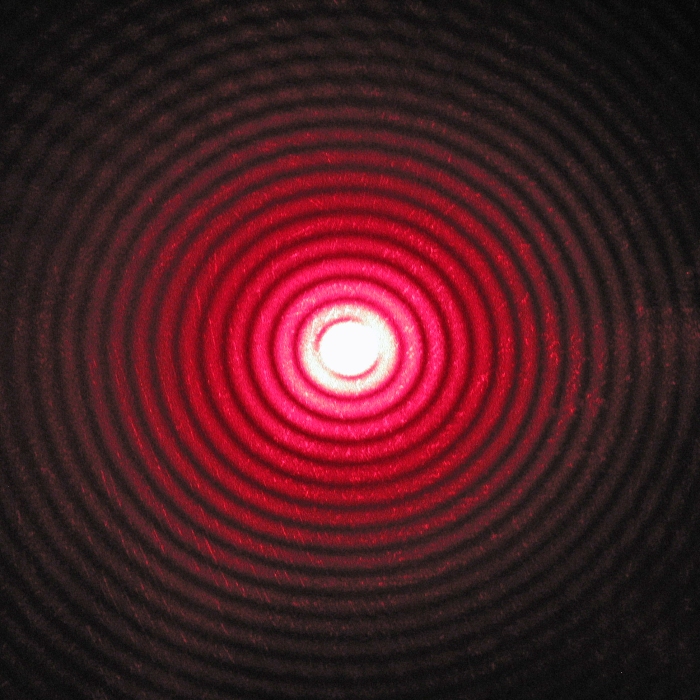
Diffraction causes a laser beam to diffuse the further it gets from its exit aperture, spreading out the energy of the laser. This is a problem because the energy a beam carries is not what inflicts damage. The energy per unit area, or Fluence, is what causes damage. For continuous beams, it would be the power per unit area, or Irradiance.
A hypothetically perfect laser will suffer from diffraction and is referred to as being Diffraction Limited. But this is not what is actually limits most actual high powered lasers in warfare.
Most high powered lasers will never even come close to being diffraction limited.
Truth is, the Beam Waist, or the minimum diameter the beam will achieve, is a more effective measurement of how damaging a laser is. A perfect laser will have a beam waist limited only by diffraction, but lasers like that don’t exist. And the greater the power of a laser, the further and further away that laser strays from being diffraction limited.
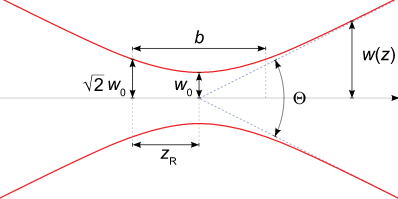
A good way to measure this is with the Beam Quality of the laser, or with the M Squared. is the beam quality factor, which can be considered a multiplier of the beam waist. So, an
of 5 means the beam waist is 5 times that of a diffraction limited beam. In terms of area, this means the beam is 25 (
) times the area of a diffraction limited beam, or 25 times as weak. As you can see, having a
even in the high single digits will yield beams a far cry from “perfect” diffraction limited beams.
In practice, it is not the pumping efficiency, nor the power supply, nor diffraction, which ultimately limits lasers. It is the beam quality factor. In the end, ends up being the number one limit on laser damage in combat.
In small lasers, close to 1 is easily achieved without issue, but in high power lasers,
can easily reach into the millions if not accounted for. This is because generally,
scales linearly with laser power.
Each optical component of a laser affects the . In particular, using a deformable mirror to focus a laser at arbitrarily long ranges (such as from 1 km to 100 km) is measured at reducing
to between 1.5 to 3. Problematic, but not exactly debilitating.
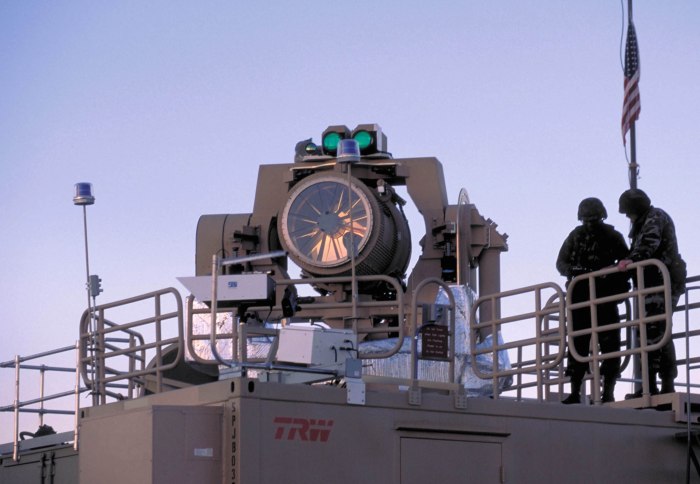
But the main issue is Thermal Lensing (Note that this is different from Thermal Blooming, which only occurs outside the laser in the presence of an atmosphere). The heating of a laser gain medium generates a thermal lens which defocuses the beam, ultimately widening the beam waist, preventing the beam from focusing properly. Also note that thermal lensing actually occurs in every single optical component of the laser, though it is strongest in the lasing medium.
Thermal lensing increases roughly linearly with input power. This means if you have 1 kW laser with a
of 1.5 (which is reasonable), this means dumping 1 MW into that same laser will yield a
of about 1500 (going the other way does not work, since
can’t be less than 1).
One might try to predict the thermal conditions and add in an actual lens reversing the thermal lens. Unfortunately, the thermal lens is not a perfect lens either, and the imperfections of this lens remain the primary cause of beam quality reduction.
Fiber lasers are often touted as a solution to thermal lensing. They are considered immune to thermal lensing except in extreme cases. Unfortunately, dumping hundreds of megawatts through a fiber laser constitutes an extreme case, and fiber lasers suffer thermal lensing nearly as badly as standard solid state lasers.
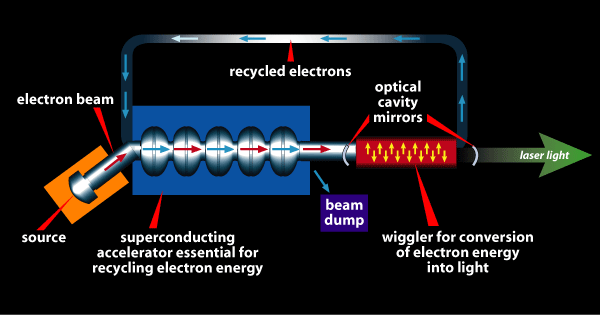
The largest innovation for combating thermal lensing are negative thermal lenses. Most gain mediums have a positive thermo-optic coefficient, and this is what generates the thermal lens. Certain optical materials have a negative thermo-optic coefficient, which produces a thermal lens inverse of what the gain medium produces. Ideally, this negative thermal lens would perfectly reverse the positive thermal lens, but in practice, the still suffers.
In the end, the primary way to combat thermal lensing is with cooling. And the primary way to cool your laser is to make it bigger.
If the proportions of a laser are kept identical, lasers can be scaled up or down with minimal change to the laser’s efficiency or output power. Indeed, you can pump 100 MW or power into a tiny palm-sized laser just as well as you can into a building-sized laser, and they will produce roughly equal beams in terms of efficiency and . The only difference is that the palm-sized laser will melt into slag when you try to fire it.
Laser size is mostly a matter of how much do you need to distribute the heat of the laser pumping. And if you want to combat thermal lensing, you’ll want a really big laser. This means laser size is essentially about cooling, and by extension, having a low .
And because size is closely related to mass, and mass is so critical to spacecraft design, the limiting factor of using lasers in space is how poor of an you want to have, given a certain power level. Though the radiator mass needed for the enormous power supplies is the other major consideration.
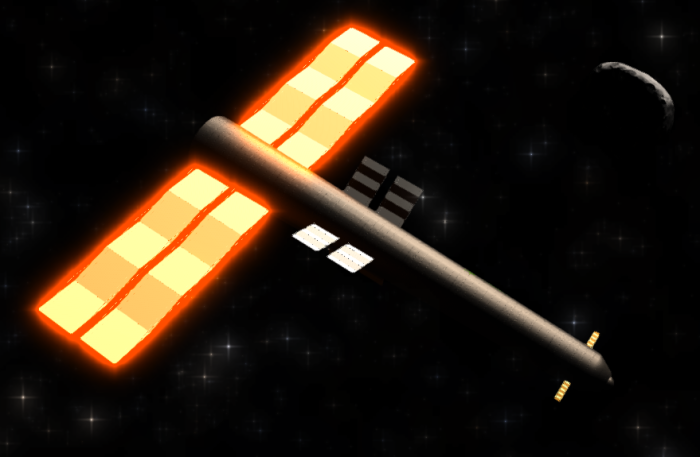
A final way to combat thermal lensing is to use Beam Combining of many smaller lasers. Combining beams side by side increases the beam waist linearly, which defeats the point, but Filled Aperture Techniques can combine beams without increasing the beam waist. However, this technique produces greater inefficiency to the final beam. The ideal way to combine beams is to simply use multiple separate lasers which all focus on a single point.
In Children of a Dead Earth, either single large lasers or multiple small, separately focused lasers can be used, and both have varying pros and cons.
Of course, designing lasers in Children of a Dead Earth is often far more difficult than designing any other system, so there are plenty of factory-made options for players to use. But the option is always there for those who really want to explore the depths of laser construction!
Always an incredible read!
What if you implemented liquid helium cooling charges to deal with laser component heating while firing, greatly reducing M. It would not deal with the waste heat of the gain medium (dozens f megawatts) but with that of the mirror and other such components that expect kW levels of heating?
LikeLiked by 1 person
The mirrors and other optical components do actually require their own separate coolant loops already (since even if an optic is 97% efficient, it still has to get rid of 3% of the total heat of the laser). The coolant loops are necessary, but ultimately to reduce the problem, you need larger and larger lens/mirrors (i.e. make the laser itself bigger).
LikeLike
Actually, efficiencies are 99.7% (or even better for certain wavelengths). 97% is for regular household applications. Still requires significant cooling…but I always assumed that the major factor would be waste heat generated by the laser in the first place. I somehow remember some theoretical estimate of a maximum efficiency of 75% for a laser. I also remember the original Battlestar Galactica series 8yes, i am that old) where are Viper would always fire three laser “bolts” at a Cylon fighter, withthe first two “bolts” always missing and the last one hitting, causing an instant explosion of the Cylon vessel. Now, assuming 75% efficiency…the amount of energy which has just been pumped into the Cylon (assuming 100% absorption) equals the amount of waste heat generated by the “three round burst”. Shouldn’t the Viper explode as well? Oh, well, that kind of though disturbed me when I was younger. Nowadays I have realized that Battlestar Galactica was more about fiction than science.
LikeLike
Have you considered implementing single shot, nuclear pumped, x-ray lasers? Perhaps as a drone, or mine?
LikeLike
Yeah, I looked into nuclear pumped x-ray lasers. However, looking into the furthest this tech has come (Project Excalibur), the general consensus is the tech is very far out of reach.
LikeLike
Speaking as someone else who is curious about this, I’m nevertheless inclined to be pessimistic. As you mentioned in your article on the Myths of Space Warfare, lasers can be devastating at close range, but they’ll rarely get there and won’t stay there for long. The thing is, that’s an exact description of the most practical use for bomb-pumped lasers: you slap a lasing medium on a nuclear missile, and fire the missile; when the nuke explodes, the lasing medium emits lasers, ideally projecting overwhelming amounts of energy in a very short span of time (instead of boiling away a few micrometers of monolithic armor per second). Unfortunately, I’m not sufficiently up-to-speed on math to determine whether or not this would be A). cost-effective or B). practical in Children of a Dead Earth when there seem to be so many other optimal methods of doing damage already.
Don’t get me wrong, I’d love it if these were implemented, but I’m not holding my breath. =)
LikeLike
I had the same question in mind. Are you, by chance, familiar with the Honorverse? Because that’s why I had that question in mind. =P
When I saw how accurately this game simulated space combat, I jumped to the possibility of implementing bomb-pumped laser warheads as an alternative to nukes, lasers, or cannons, just to see how well it would actually work in an accurate simulation. I figured that if you couldn’t implement laser warheads on a missile, you could always implement them on a drone. =)
LikeLike
Are you familiar with Luke Campbell’s analysis of laserweapons called “How to Build a Laser Death Ray”?
http://panoptesv.com/SciFi/LaserDeathRay/DeathRay.html
If so, could you tell us, whether your lasers are “Heat Rays”, “Blasters” or “Ray Beams”?
Do they heat the target until it melts, or do they induce mechanical stresses that rip apart the material?
LikeLike
Yeah, Luke Campbell’s site is what I use for laser ablation equations. The lasers in Children of a Dead Earth fall into all three categories at once, though the damage is primarily due to heat (Heat Rays), but also with some mechanical damage (Blasters). Deep penetration via X-rays/gamma rays though requires very exotic laser types. The shortest wavelength you can run with in game is short wave ultraviolet, which is somewhat deep penetrating, but not really on the same level as X-rays/gamma rays.
LikeLike
Do you simulate vibrations from the coolant impacting aim precision? Or does that not really crop up wt distances under 1000km?
LikeLike
Oh, another thing: Do the lasers only use optical wavelenghts, or will there also be things like x-ray and microwave beams?
LikeLike
You can use non-optical wavelengths, though things like x-ray lasers and other high frequency lasers generally require really exotic laser designs.
LikeLike
Last but not least: Are the laser generators inside the hull of the ship (and thus could supply several turrets), or is each laser integrated into one laser turret?
LikeLike
I considered having a single generator feed multiple turrets but any problems that this idea might solve didn’t actually come up.
In actuality, turrets had to be huge (because bigger apertures means a smaller beam waist). And these turrets needed to be heavily armored, which means the turrets are far bigger and more massive than the lasers themselves (though the laser crystal/optics are always far more expensive). This meant you usually wanted fewer turrets than lasers. Generally, one big turret on the front of your ship worked the best.
LikeLike
Can you use expandable coolant instead of radiators for lasers? If so, what are the pros and cons?
For example, is it possible to use cryogenic fuel to cool the laser down, like in regenerative cooling?
LikeLike
Expendable coolant is very heavily avoided for anything in space. The amount of mass needed is problematic, especially considered long term traveling, because expendable coolant is essentially “dead mass” to a spaceship and hurts the mass ratio.
Engines can get away with it (with regenerative cooling) because they’re already expending the mass (so it’s not dead mass).
Additionally, using expendable coolant for lasers means one of the big advantages of lasers (no ammo required) is lost because then the coolant can be counted as ammo. Same reason why chemical lasers are avoided, they require ‘ammo’ more or less.
LikeLike
Would like to continue the line of questioning from last thread.
Is the probe-and-drogue (and ammo rack transfer) system just assumed to be there and the fuel is transferred instantaneously? Or does it have a set speed it works at?
If the second option, is this modifiable?
Does it work for ship-to-ship too? I kinda assume this is true, but would like to make sure.
LikeLike
It has a set speed. The fuel transfer system is simulated as in depth as any of the other systems. And yes it is ship-to-ship.
LikeLike
I take it this is the same for transferring ammo and cargo?
Also, another question I had earlier. Will there be something like a battery or capacitor part? Or fuel cells?
Mostly so we don’t throw away an RTG with each missile or drone.
LikeLike
Right, same. Also, small batteries (< 1 kg) are used to power any craft without any significant power draws (like missiles and drones).
LikeLike
Hi! First of all, the quality of the math and physics you’re putting into this is fantastic.
Second, I’m a software developer with a lot of testing experience. Are you looking for additional testers before the Steam release?
LikeLike
Another question.
In “Retaking Ceres Alpha 3.5.3.0 Windows” I noticed that there is a “Run Turn” button. Is this temporary, or is COADE going to be a sorta-kinda turn based game?
LikeLike
Maneuvers on the orbital level are carried out with options to accelerate time due to the vast distances, the AI has moves planned out already, and they act on them whenever you “run turn”; all tactical is carried out in real-time.
LikeLike
have you considered casaba howitzers? : http://www.projectrho.com/public_html/rocket/spacegunconvent.php
LikeLike
Hmm, I was able to bulid a laser that has higher power output at distance (220MW per m^2) than its specified power output, is this a bug or I am I missing some important math?
LikeLike
Would there be any use to an AESA or PESA behind a radome, steered electronically to hit incoming targets with focused microwave photons? You might be able to put it behind an armored radome, and the electronic steering would both let you switch targets really quickly and (whether this is beneficial or not) would let you focus the radiation at the point you’re shooting for while still having it spread out at the emitter.
LikeLike
Could we perhaps develop a chemical pumped laser for space station or asteroidal defense at extreme ranges? This might have a targetting apeture similar to a telescope dome, but emitting photons instead of receiving? An avenue for adding a big problem to the theater. A space station, moon, or asteroid base, effectively stuck in place, would of course wish to eliminate incoming aggressors before they transfer orbit down into intercept ranges of their onboard weapons. ..and so the arms race progresses.
LikeLike
Do you simulate Free Electron Lasers? The X-FEL projects in real life can produce a broad spectrum of wavelengths without changing the lasing medium ?
LikeLike
Apologies, I have read the posts above…you do it appears
LikeLike